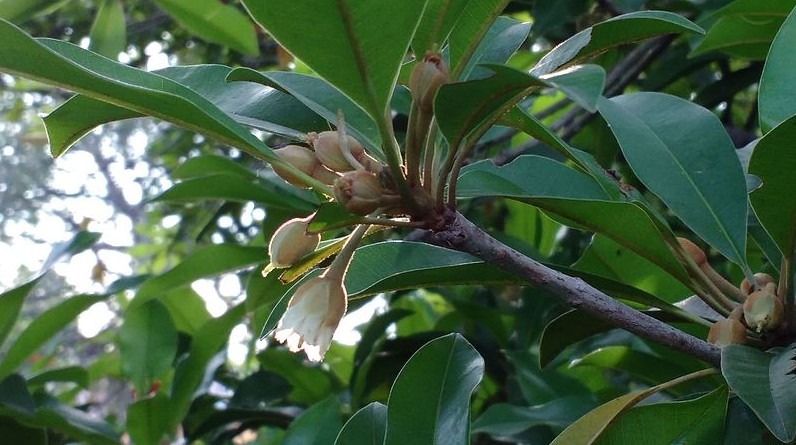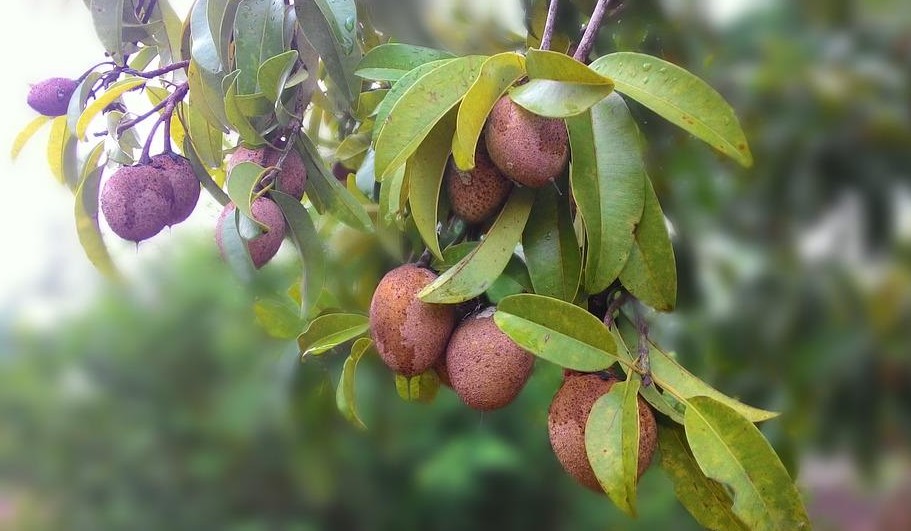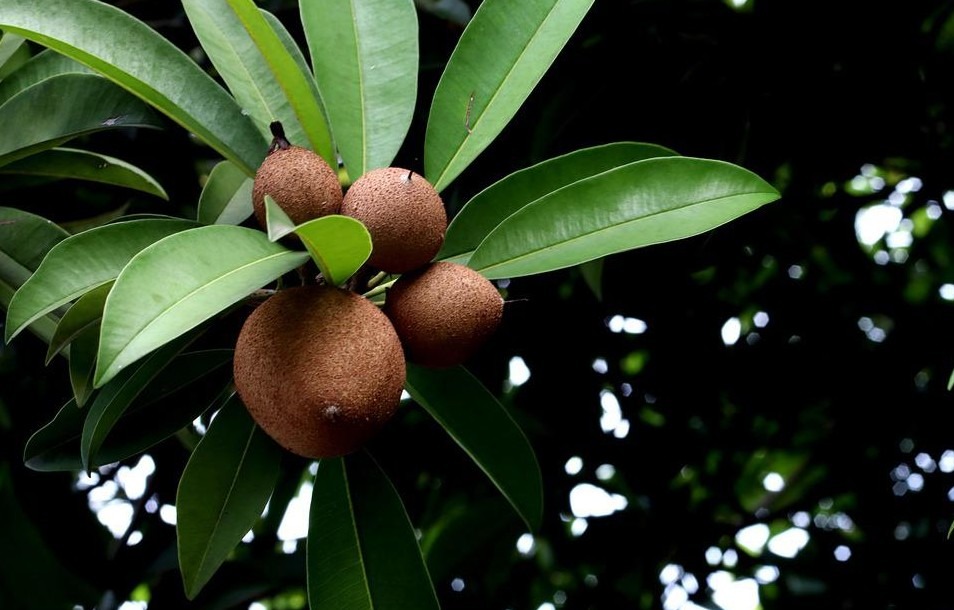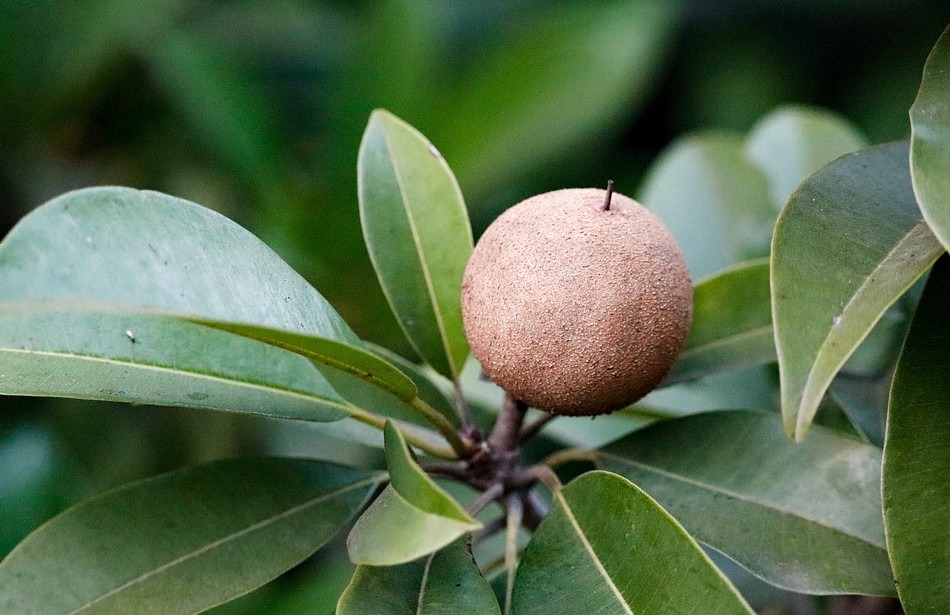Trees have long been vital to human existence. Being the biggest plants on Earth, they provide oxygen, serve as carbon storage, keep the soil steady, and bestow us with fruits, liquids, and other raw materials for tools and shelter. Not to mention that they are also aesthetically pleasing, coming in all shapes, colors, and sizes with each standing gracefully and exuding distinct beauty.
Despite their many benefits and uses and being plentiful around the world, trees are not occasionally deemed as a fount of edible leaves, especially in temperate regions. That’s not the case in the tropics, however, as the edible qualities of tree leaves are well-loved by some people who use them as a source of nutrition. Just be mindful that not all tree leaves can be eaten, as they may contain elements that are harmful to the human body.
In this article, let’s focus on Sapodilla, a tree well-loved for its nutritious fruit and sap that’s widely used in the chewing-gum industry. How about its leaves? Are they edible? Can you safely incorporate it into your diet? Continue reading below to know the answers.
What is Sapodilla?
First, let’s know more about what Sapodilla is (Manilkara zapota). Sapodilla is an evergreen tree that is deemed to be native to Yucatan, other parts of southern Mexico, northeastern Guatemala, and northern Belize. It has been cultivated since ancient times and has been introduced to other parts of the world like the West Indies, tropical America, Bermuda, the Bahamas, Philippines, India, and Ceylon. Today, it’s found in many other places in the world.
The Sapodilla tree grows up to 30 meters (98 feet) and yields fruit egg-shaped fruits called sapodilla in North America, chicku in India, naseberry in British West Indies (BWI), dilly in the Bahamas, chickozapote in Mexico, and sapotillier in the French territories. Other names it’s called include sapota, chikoo, zapotillo, zapote, and sepadilla.
The fruit is around 5-9 centimeters (2-3.5 inches) in diameter, with a weight of 75-200 grams (2.6-7 ounces). It has a rough, brown skin, but opening it reveals a soft, slightly gritty yellow to light brown flesh. It’s very sweet and delicious, with some comparing it to the taste of amazing flavors from brown, cinnamon, and pears combined.
While the ripened fruit is commonly eaten raw, it can be added to drinks and desserts like ice cream, sherbets, custard, tarts, pies, jellies, jam, and baked goods. The fruit contains various vitamins and minerals, such as folates, calcium, magnesium, zinc, copper, selenium, phosphorus, etc. that boost health and allow the body to facilitate various functions.
Meanwhile, a primary by-product of the Sapodilla tree is chicle, a gummy later used for making chewing gum. While the bark is used for tinting fishing lines and sails, due to their high tannin content.
Can Humans Eat Tree Leaves?
You can eat lettuce leaves or cabbage leaves, but can you eat tree leaves? While the other parts of the tree are used for food and for other resources, knowing first whether tree leaves are edible is important, as they can contain toxins. In general, tree leaves are often not consumed as they have very fiber content, making them harder to digest.
While most tree leaves are also full of a sugar type called cellulose, we don’t possess the bacteria and enzymes needed to break them down. Thus, they provide very little energy. With that, people have evolved to seek other foods to extract carbohydrates and fat to get needed energy.
Lack of energy, however, doesn’t mean insufficient nutrients. Many tree leaves commonly contain vitamins like vitamins A and C, while some have sodium, potassium, and calcium.
Are Sapodilla Leaves Edible?
For the Sapodilla tree, only the newer, younger leaves that are pinkish-brown in color are considered edible. The dark green, matured leaves must not be eaten, as they contain toxic alkaloids. These are small organic molecules that are primarily involved in protecting plants from their predators and pathogens through toxicity. About 20% of plant species have alkaloids.
Moreover, the consumption of sapodilla leaves isn’t direct. Rather, sapodilla leaves are boiled to be served as tea. The concoction offers many benefits, such as controlling diarrhea, lowering blood pressure, and as a remedy for fever, hemorrhage, cough, gallstones, thrush, indigestion, common colds, and other pulmonary ailments.
How to Know if Tree Leaves Are Edible?
In case, you happen to encounter any tree, and you want to double-check if its leaves are edible. Here are some steps that you must take to ensure you’re not consuming one that may be detrimental to you.
First, smell it. Poisonous plants typically give off strong, unpleasant smells. Leave it if you happen to come across one. Intense odors are a bad sign.
Second, you may try contact poisoning. Get a leaf and place it on your elbow, lower arm, or wrist for a couple of minutes. If any reaction ensues, such as burning, numbness, swelling, itchiness, or rashes, avoid the tree and never ingest the leaves.
As mentioned, tree leaves aren’t usually consumed. Most tree leaves are boiled rather than eaten. If you still wish to eat the leaves, make sure to only consume small amounts.
Next, you may try lip testing. Place a leaf against your lips. Wait for a few minutes to see if there will be any reaction. Typically, a burning or tingling sensation will occur if the leaf is poisonous.
You may also conduct a taste test. Bite a small portion of the leaf and chew it. Be cautious not to swallow it. Leave it in your mouth for about 10-15 minutes. However, if you detect any soapy or bitter taste, spit it out. Poisonous plant compounds are usually bitter, which normally tells the brain to reject and avoid them.
If you didn’t experience any immediate reaction, you can swallow a very little amount. Allow a few hours to see how the body reacts. Common signs and symptoms include indigestion, chills, vomiting, nausea, and fever. If your body doesn’t react, the tree leaves are ideally safe for consumption.
Still, these steps should only be done in worst-case scenarios. It’s best to consult any health practitioner or expert prior to consuming any leaf. If you’re unsure, chances are you’d be better off consuming only those that you’re already 100% sure are edible like the fresh, young Sapodilla leaves.





